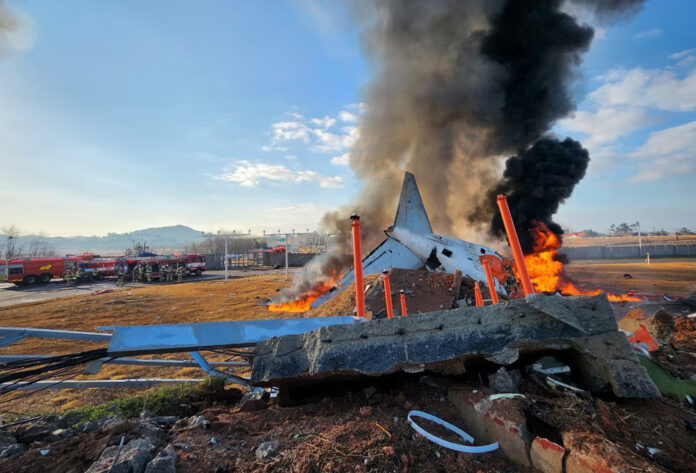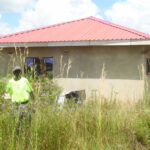The crisp Sunday morning air at South Korea’s Muan International Airport held a chilling premonition. At 8:57 a.m., a routine alert crackled over the control tower: “Caution: Bird Activity.”
This wasn’t unusual; the airport’s proximity to several bird habitats is well-known. However, two minutes later, a desperate cry shattered the calm: “Mayday, mayday, mayday, bird strike, bird strike, going around,” a pilot’s voice, strained with urgency, relayed to air traffic control, according to South Korea’s Transport Ministry.

The ensuing six minutes would etch themselves into aviation history as one of the deadliest air disasters in recent years, claiming the lives of 179 passengers and crew aboard Jeju Air flight 7C 101. Only two survived – both flight attendants seated towards the rear of the 15-year-old Boeing 737-800.
The flight, originating from Bangkok, had seemed unremarkable for the first five hours. Passengers, many enjoying a post-winter escape from South Korea’s frigid temperatures, included government workers on holiday, two Thai nationals (one a 22-year-old aspiring flight attendant), and a three-year-old boy on his first overseas trip. His father’s poignant Instagram post from the previous day, “The first stamp on his first passport!”, now serves as a heartbreaking testament to the tragedy.
The Boeing 737-800, a predecessor to the 737 MAX and boasting a remarkable safety record over its 27 years of operation (according to Boeing’s accident statistics from 1959 to 2023, with only 10 fatal accidents resulting in irreparable damage), was cleared to land on Muan’s single, 1.5-mile runway. The pilots initiated their descent, but the bird strike warning had already been issued.
Analysis of flight data by Flightradar24, an aviation tracking specialist, suggests the pilots performed a low-pass maneuver, a technique used to allow air traffic controllers to visually confirm the landing gear’s position, particularly when there are concerns. This was followed by the mayday call at 8:59 a.m., and a 180-degree turn to approach from the opposite direction. During this critical period, passengers managed to send frantic text messages to loved ones. One chilling message read: “Should I write a will?” another simply stated that a bird had struck the wing.

At 9:01 a.m., clearance was given for a second landing attempt. However, the plane touched down about halfway along the runway, without its landing gear deployed, and with its flaps and slats still stowed, according to Flightradar24. The aircraft, travelling at speed, scraped along the runway on its belly.
Lee Geun-young, a local restaurant owner, witnessed the horrifying scene unfold. He heard loud bangs, rushed to his rooftop, and captured 54 seconds of cellphone footage that has since been broadcast globally. The video shows the plane careening down the runway before impacting a barrier and erupting into a fireball at approximately 9:03 a.m. “The heat on my face was like the steam rising from a sauna,” Lee recounted.
https://twitter.com/AlexInAir/status/1873176582480912728
The crash site revealed a significant design flaw. The plane struck a roughly 7-foot-high barrier supporting localizer antennas, part of a landing-assistance system. Simon Hatfield, an Australian airport safety and design consultant, explained that the unusual elevation of the localizer, necessitated by the downward slope of the terrain at the runway’s end, created a dangerous obstacle. Had this barrier not been present, the plane might have been able to plow through the breakable localizer, significantly reducing the severity of the impact.

The aftermath saw a heartbreaking scene at Muan Airport, with distraught relatives awaiting news as the death toll mounted. One family member’s final text to his daughter, “Did you arrive yet, princess?”, encapsulates the profound grief felt by many. As of Monday evening, over 145 bodies had been identified, with authorities utilising DNA and fingerprint analysis to identify the remaining victims.
The investigation, involving South Korean authorities, the U.S. National Transportation Safety Board, Boeing, and the U.S. Federal Aviation Administration, is underway. The retrieval of the black boxes, one of which is partially damaged, will be crucial, but the decoding process could take months. Acting President Choi Sang-mok has ordered an emergency safety inspection of South Korea’s entire airline operation system, focusing on the 101 Boeing 737-800 jets currently in operation.












